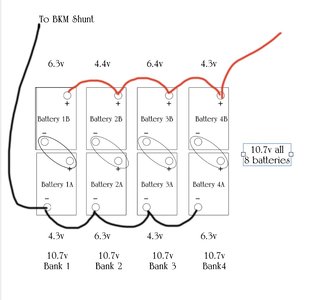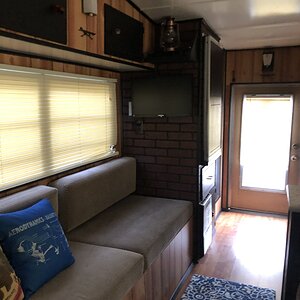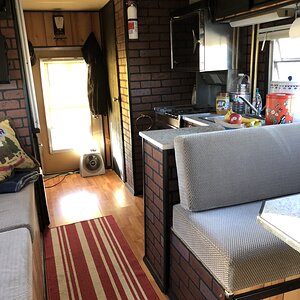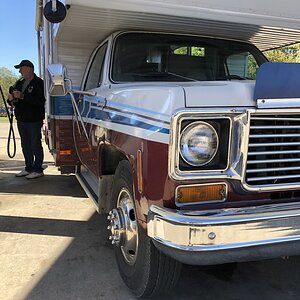flarider
RVF Regular
- Joined
- Mar 7, 2020
- Messages
- 83
- RV Year
- 2018
- RV Make
- Newmar
- RV Model
- 4327
- RV Length
- 43
- Chassis
- Spartan K2
- Engine
- Cummins L9 450
- TOW/TOAD
- 2023 Jeep Wrangler
I think I have at least one bad batter in my bank. I can only go about 1.5-2 hours before I hit my LBCO which is set at 11.7, I did have it lower and it was about the same It looks like I am drawing about 18 amp (240 watts) with just the basic on, refrigerator, DirecTV receiver and pepwave router and 28 amps when the refrigerator compressor kick on.
When the batteries got below 11 volts I checked them to see if I could find a bad battery but got some odd reading. Look at picture below, all 8 batteries had 10.7 volts each 12 volt bank had ~10.7 volts and ever other battery was ethier ~6.3volts or ~4.3volts. Why would they discharge that way? Is this normal?
When the batteries got below 11 volts I checked them to see if I could find a bad battery but got some odd reading. Look at picture below, all 8 batteries had 10.7 volts each 12 volt bank had ~10.7 volts and ever other battery was ethier ~6.3volts or ~4.3volts. Why would they discharge that way? Is this normal?
Attachments
-
 CleanShot 2021-06-14 at [email protected]91.7 KB · Views: 13
CleanShot 2021-06-14 at [email protected]91.7 KB · Views: 13












